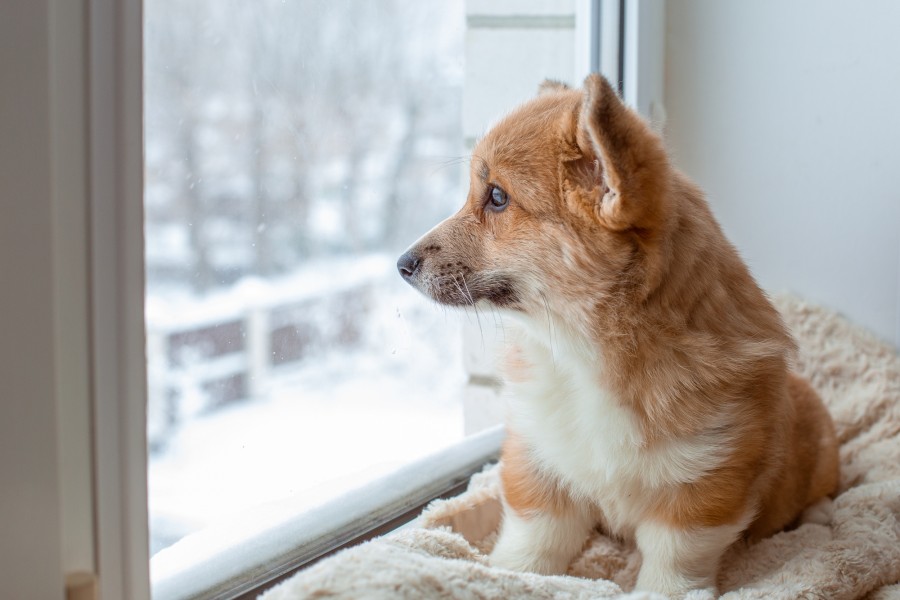Pandemic Puppies: How to Manage Unsocialised Dogs Shaped by COVID-19

It was interesting to see what seemed like a good side effect to the stay-at-home orders: People the world over went out and got puppies or adopted dogs from shelters. Being home all the time definitely makes training a puppy easier, especially potty training. You are there to let them out frequently until they can hold it for longer. They can spend more time out of their x-pen or crate since you are there to watch them. But there is a big downside to this, something most dog owners weren’t actually aware of: those pandemic puppies would grow into unsocialised dogs that had little contact with the outside world. A recipe for disaster for most pet parents. Unfortunately, because of this, in some parts of the world the shelters are filling up with these “pandemic puppies.” Instead of rehoming, here are some tips to managing your pandemic puppy.
First, you should know why this happened. Puppies have key socialisation periods, including two fear periods, that occur before they reach 1.5 years old. During this time, they need to be exposed to as many things as possible: different noises, weird surfaces to walk on, car rides, store trips, other animals including dogs, kids, strangers, etc. And those experiences need to be positive. The more positive experiences your puppy has – where she remains happy and calm – the more likely she will develop into a well-adjusted, family friendly dog.
Stay-at-home. The exact event that caused a splurge in puppy parents, would also be their down fall. Well-meaning owners thought they were doing something amazing, and they were! There is nothing better than having a dog. But these pandemic puppies did not get to go on trips to the store, meet children at the park, or have strangers coming in and out of their home. If their owners had a yard, these puppies may not have ever left their new home, except for a quick trip to the vet for their puppy shots. Their socialisation period came and went without any socialisation. The only people handling them is their immediate family. The only surfaces they have walked on are the ones in their house. They haven’t met other dogs, or other animals.
So, when things started to open up, you had a stressed, reactive adolescent dog on your hands. A dog who has no idea how to handle the real world.
Don’t give up! Many rescue dogs that come from bad situations are a lot like these pandemic puppies. It’s hard work, but it is possible to help them learn to cope.
Patience Is Key
You are going to have to have patience and go at your dog’s pace. You cannot force a dog to overcome its fears. It will just make the fears worse. You can’t “show them they are fine,” because being “fine” is an emotional state you do not have control over. That’s like telling your screaming teenager to “calm down.” It never works.
Instead, work with your dog. Start out slow and expose them to one thing at a time. Go to the park on a quiet day, when kids are in school. Start with plenty of distance between you and anything your dog has shown fear/reactivity to: that could be cars, dogs, people, anything! Reward for calm behaviour. The reward can even be to make that scary thing go away by walking away from it. Only decrease distance when your dog is calm and seems interested in getting closer.
If your dog reacts, do not leave the situation unless necessary for safety reasons. If you do, you are teaching them that reacting (barking, lunging, whining, pulling) makes the scary thing go away.
Give them a Safe Space
When it comes to inviting people into your home, pick quiet, dog savvy people at first. It may help to teach your dog what to do when people come over (like this article that teaches your dog to relax on a mat when someone comes to the door). This can help your dog feel relaxed, as they have a “job.” Tell visitors not to approach or pet your dog while on their mat. This way, the mat (or crate) becomes a safe space for your dog, they can retreat to it when they are feeling stressed. This helps lessen the chance of fear biting.
Professional Help
Working with a dog trainer will make this process easier. They can be an extra set of eyes and hands to set up controlled scenarios to teach your dog to remain calm. They can also teach you how to read your dog’s body language better, so you can tell when they are getting too stressed, or are ready for more. If your dog is so stressed, they cannot function (won’t respond to cues, showing multiple fear signals, won’t eat, etc.) Just be patient and pull further away from whatever it is causing the stress.
The main thing is to watch your dog and go at their pace. Have patience. You can help them learn the world is full of fun and positive things, it will just take time

This is great - mine is 17 months old now, a lab, very social but - doesn't like being left outside shops anymore - he used to be fine when he was young. And of course, because barely any visitors, has not learned how to meet and greet.